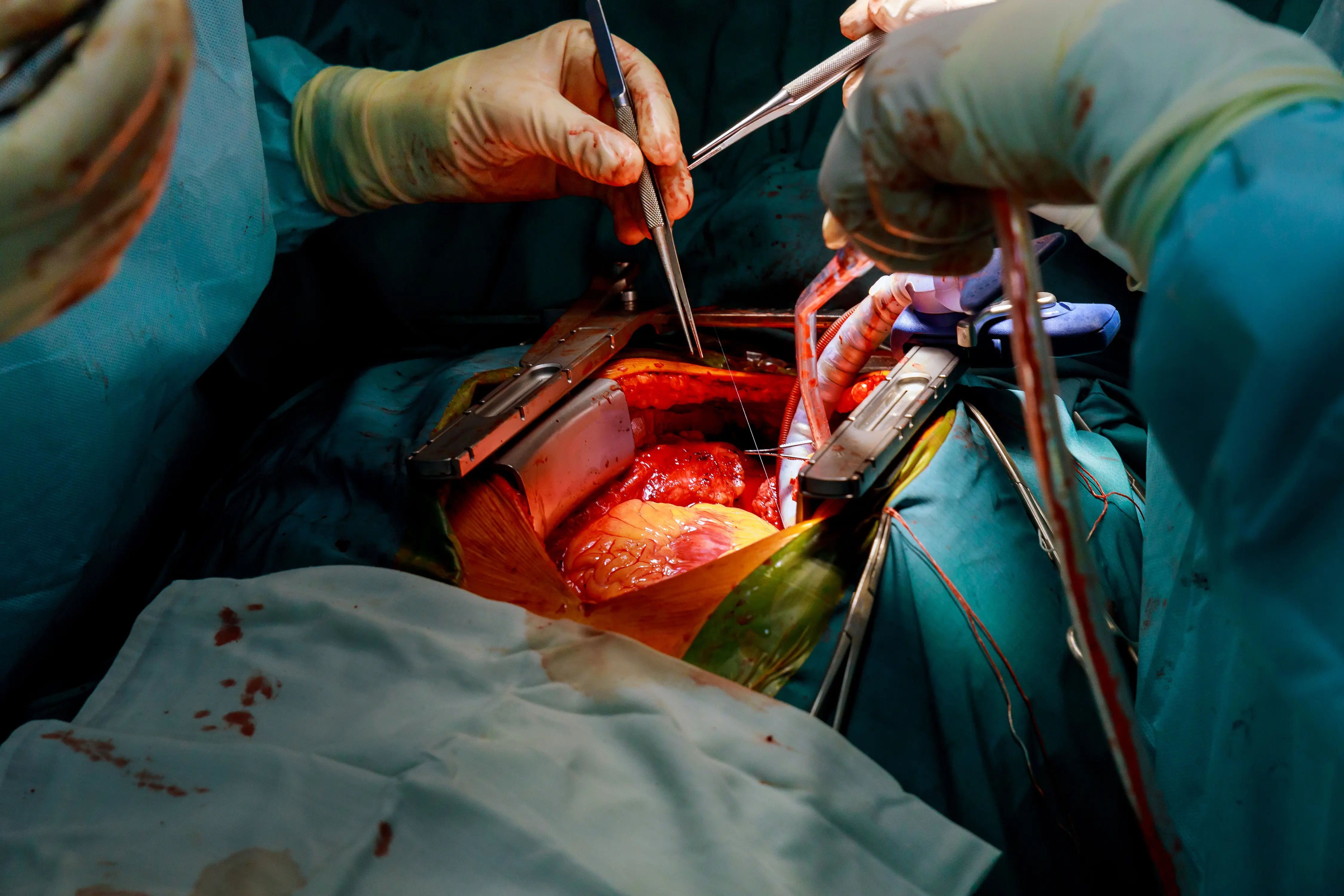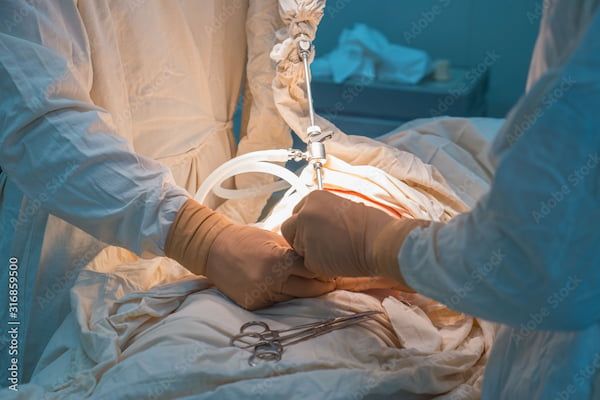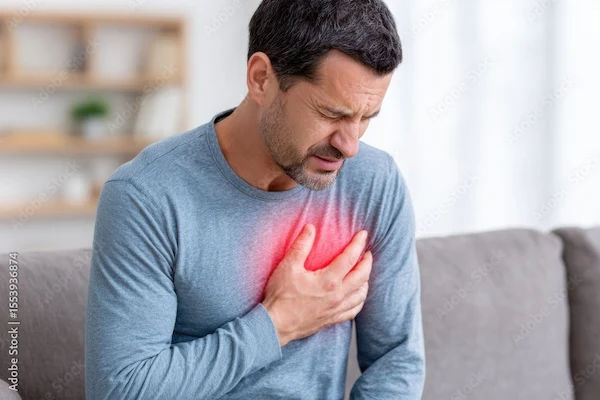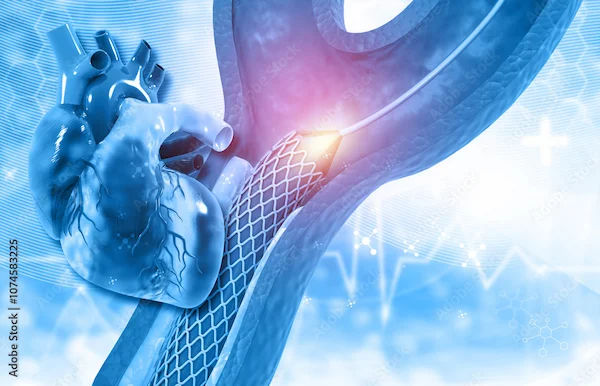Heart Attacks vs Stroke
Explore the critical differences between heart attacks and strokes in our comprehensive guide. Learn about symptoms, causes, and prevention strategies to safeguard your health. Understand how these two medical emergencies affect the body and what steps to take in case of an emergency.

Written by Dr.Sonia Bhatt
Last updated on 3rd Jul, 2025

Ever wonder what the difference is between a stroke and a heart attack? These two conditions are very often confused with each other, but understanding the differences is critical to recognizing signs and getting help right away. Let's learn more about these conditions and differentiate between them.
Heart attack:
A heart attack occurs when the blood supply to the heart muscle is cut off or obstructed.
The area supplied by the blocked artery and the time to treatment determine the extent of damage and recovery period.
Stroke:
A stroke occurs when an artery that supplies the brain with oxygen and nutrients bursts (or ruptures) or becomes blocked by a clot. Part of the brain dies as a result of not receiving the blood (and oxygen) it requires.
Causes and Risk Factors
There are certain risk factors which make it more likely for a person to experience a heart attack or a stroke.
For Both Conditions
High Blood Pressure puts more stress on the heart and blood vessels.
High Cholesterol Levels This leads to plaque buildup in arteries, blocking blood flow.
Diabetes Increases risk and has an impact on blood vessel health.
Smoking Damages arteries and decreases oxygen in the circulation.
Obesity contributes to high blood pressure and cholesterol.
Unique Causes and Risk Factors for Heart Attack
Coronary Artery Disease: Arteries may narrow due to plaque accumulation.
Sedentary Lifestyle: Lack of exercise can weaken heart health.
Family History: Genetics may be a significant factor.
Stress: Chronic stress can damage the heart
Unique Causes and Risk Factors for Stroke
Atrial Fibrillation: Irregular heartbeat can lead to clots.
Transient Ischemic Attacks (TIAs): Precursor to full-blown strokes.
Certain Medications: Some anticoagulants can increase the risk of bleeding.
Alcohol Consumption: Heavy drinking can raise stroke risk
Symptoms of Heart Attack
Understanding the signs and symptoms of a heart attack and stroke is crucial for timely medical intervention, which can save lives and reduce long-term health complications. Here’s a brief overview of each:
Chest pain or discomfort: Often described as pressure or squeezing.
Pain in arms, back, neck, jaw, or stomach: May radiate from the chest.
Shortness of breath: This can occur with or without chest discomfort.
Cold sweat, nausea, or lightheadedness: Common accompanying symptoms.
Symptoms of Stroke
A stroke happens fast, and every second counts. Knowing the warning signs can mean the difference between a full recovery and lasting damage.Here are some signs to look out for:
Sudden numbness or weakness: Particularly on one side of the body (face, arm, or leg).
Confusion: Trouble speaking or understanding speech.
Vision issues: Sudden trouble seeing in one or both eyes.
Difficulty walking: Dizziness or loss of balance.
Recognising Differences in Symptoms
Time sensitivity: Stroke symptoms usually develop suddenly; heart attack symptoms develop gradually.
Location of pain: Chest pain is associated with heart attacks, while strokes relate to the body's functions, bringing about weakness or numbness.
Speech and vision: Stroke may cause confusion and vision problems, rare in heart attacks.
Consult Top Cardiologists For More Symptoms
Diagnostic Tests for Heart Attack
To diagnose a heart attack, healthcare professionals typically use a combination of tests:
Electrocardiogram (ECG): Records the heart's electrical activity to identify the abnormalities.
Blood Tests: Look for markers, such as troponin, that indicate heart muscle damage.
Chest X-ray: Examines the heart and lungs for signs of heart failure or other issues.
Coronary Angiography: Involves injecting dye into coronary arteries to visualise blockages via X-ray.
Diagnostic Tests for Stroke
For stroke diagnosis, timely assessment is critical. Common tests include:
CT Scan: Quickly identifies bleeding or ischemic strokes by producing detailed brain images.
MRI: Provides much more detailed brain tissue images, which can help detect ischemic stroke.
Blood Tests: Assess clotting factors and other relevant indicators.
Carotid Ultrasound: Evaluates blood flow in the carotid arteries to identify blockages.
Treatment for Heart Attack
Various treatments are available to prevent fatal outcomes, including emergency interventions and medications.
Aspirin: Reduces blood clotting to improve blood flow.
Thrombolytics: Quickly dissolve clots obstructing blood vessels.
Antiplatelet agents: Help prevent new clots from forming.
Surgical Procedures
There are surgical procedures which can be opted for, such as:
Angioplasty: A balloon is inserted to open blocked arteries.
Coronary Artery Bypass Grafting (CABG): Bypasses blocked arteries to restore blood flow.
Long-term Management:
Successfully managing the aftermath of a heart attack necessitates a comprehensive and ongoing approach. Here are some methods for long term management:
Lifestyle Changes: Adopting a heart-healthy diet, exercising regularly, and quitting smoking.
Medications: The management of risk factors involves prescription drugs, most of which include statins, beta-blockers, and ACE inhibitors.
Regular Follow-ups: Consistent check-ups with healthcare providers are essential to monitor heart health, adjust medications, and address any concerns
Treatment for Stroke
Understanding treatments for stroke are crucial for effective recovery and minimizing long-term effects. Following are the primary treatment options:
Thrombolytics: Administered within a few hours to dissolve blood clots.
Mechanical thrombectomy: A procedure to physically remove the clot to clear the blockage.
Surgical Procedure
Surgery may be necessary to repair ruptured blood vessels or relieve intracranial pressure.
Timely and appropriate treatment is crucial for minimising damage and enhancing recovery in both heart attack and stroke cases.
Prevention Strategies
Preventing heart attack and stroke requires a holistic approach, which includes lifestyle modifications and targeted preventive measures. By understanding these strategies, individuals can significantly reduce their risk.
Lifestyle Changes to Prevent Both Conditions
Adopting a healthy lifestyle is fundamental in mitigating risks associated with both heart attack and stroke. Key lifestyle changes include:
Regular Physical Activity: Exercise at least 150 minutes of moderate weekly exercise to enhance cardiovascular health.
Nutritious Diet: Emphasize a diet rich in fruits, vegetables, whole grains, and lean proteins while minimising saturated fats, added sugars, and sodium.
Smoking Cessation: Quit smoking to reduce risk factors significantly.
Weight Management: Maintain a healthy weight to lower the chances of cardiovascular complications.
Specific Preventive Measures for Heart Attack
Monitor Blood Pressure and Cholesterol: Regular health check-ups are crucial.
Stress Management: Incorporate relaxation techniques like mindfulness or yoga.
Specific Preventive Measures for Stroke
Control Blood Sugar Levels: Elevated sugar may cause damage to the endothelial layer of blood vessels
Limit Alcohol Intake: Consume alcohol in moderation, if at all.
Complications
After a heart attack, individuals may experience complications such as
heart failure,
arrhythmias,
myocardial ischemia.
The heart's ability to pump effectively can be compromised, leading to fatigue and fluid retention. There is also a potential risk of increased depression and anxiety, thus affecting mental health and rehabilitation.
Complications Following a Stroke:
Stroke survivors often encounter challenges like
cognitive impairment
speech difficulties
mobility issues.
Such complications can interfere with performing daily activities and independence. Additionally, emotional changes like post-stroke depression are quite common and require comprehensive support and intervention.
Understanding these complications is essential for proper management and rehabilitation, improving quality of life and regaining control over one's health.
Myth vs Facts
Understanding heart attack and stroke myths and facts is crucial because false beliefs may cause treatment to be postponed or cause unnecessary anxiety. Here are some common myths and their corresponding facts.
Myth: Heart attacks are always fatal.
Fact: With prompt medical attention, many people survive heart attacks
Myth: Heart attacks are always sudden and unexpected.
Fact: In the days or weeks before a heart attack, some people may experience warning signs, including shortness of breath or chest pain.
Myth: Only the elderly are prone to strokes; younger people are not likely to develop strokes.
FACT: There is no evidence to support the fact that young people cannot develop stroke or it is an elderly-specific disease.
Myth- If Stroke Symptoms Disappear, You Don't Need to See a Doctor
Fact: Symptoms of a temporary stroke are known as a Transient Ischemic Attack (TIA). This is a significant warning sign of stroke and needs severe treatment.
When to seek help
Immediate medical attention is crucial in emergencies such as heart attacks and strokes.
Seek help if experiencing symptoms like chest pain, shortness of breath, or radiating pain in the arm or jaw, especially if they last longer than five minutes.
Act fast if you notice sudden numbness, confusion, or difficulty speaking. Remember the acronym FAST:
F-Face drooping
A-Arm weakness
S-Speech difficulties
T-Time to call emergency services.
Conclusion
Heart attacks and strokes are two conditions that cause significant damage to the heart and brain. Heart attacks involve the blood supply to the heart muscle being cut off, while strokes occur when an artery that supplies the brain with oxygen and nutrients bursts or becomes blocked by a clot. Common risk factors for both conditions include high blood pressure, high cholesterol levels, diabetes, smoking, obesity, coronary artery disease, sedentary lifestyle, family history, stress et cetera.
Early detection of heart attacks and strokes is vital. Recognise symptoms like chest pain or face drooping. Immediate treatment, including medications and surgeries, significantly improves outcomes. Awareness and regular check-ups can prevent severe complications.
Consult Top Cardiologists
Consult Top Cardiologists For More Symptoms

Dr. Dayanashre N
General Physician
3 Years • MBBS
Bengaluru
PRESTIGE SHANTHINIKETAN - SOCIETY CLINIC, Bengaluru

Dr. Bhethala Sharan Prakash
General Physician/ Internal Medicine Specialist
5 Years • MBBS MD
Bengaluru
PRESTIGE SHANTHINIKETAN - SOCIETY CLINIC, Bengaluru

Dr. Zulkarnain
General Physician
2 Years • MBBS, PGDM, FFM
Bengaluru
PRESTIGE SHANTHINIKETAN - SOCIETY CLINIC, Bengaluru

Dr. Anand Ravi
General Physician
2 Years • MBBS
Bengaluru
PRESTIGE SHANTHINIKETAN - SOCIETY CLINIC, Bengaluru
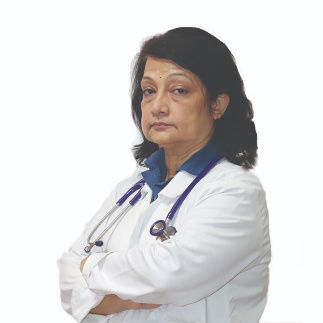
Dr. Tripti Deb
Cardiologist
40 Years • MBBS, MD, DM, FACC, FESC
Hyderabad
Apollo Hospitals Jubilee Hills, Hyderabad
Consult Top Cardiologists

Dr. Dayanashre N
General Physician
3 Years • MBBS
Bengaluru
PRESTIGE SHANTHINIKETAN - SOCIETY CLINIC, Bengaluru

Dr. Bhethala Sharan Prakash
General Physician/ Internal Medicine Specialist
5 Years • MBBS MD
Bengaluru
PRESTIGE SHANTHINIKETAN - SOCIETY CLINIC, Bengaluru

Dr. Zulkarnain
General Physician
2 Years • MBBS, PGDM, FFM
Bengaluru
PRESTIGE SHANTHINIKETAN - SOCIETY CLINIC, Bengaluru

Dr. Anand Ravi
General Physician
2 Years • MBBS
Bengaluru
PRESTIGE SHANTHINIKETAN - SOCIETY CLINIC, Bengaluru

Dr. Tripti Deb
Cardiologist
40 Years • MBBS, MD, DM, FACC, FESC
Hyderabad
Apollo Hospitals Jubilee Hills, Hyderabad
